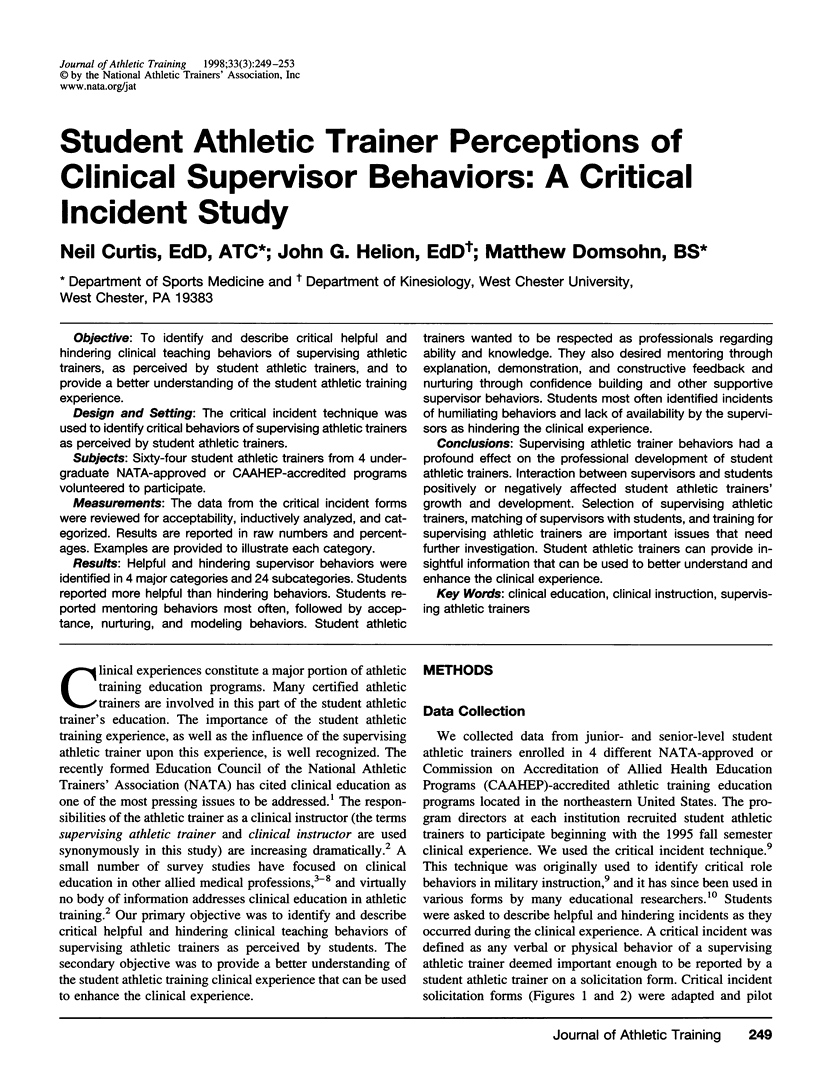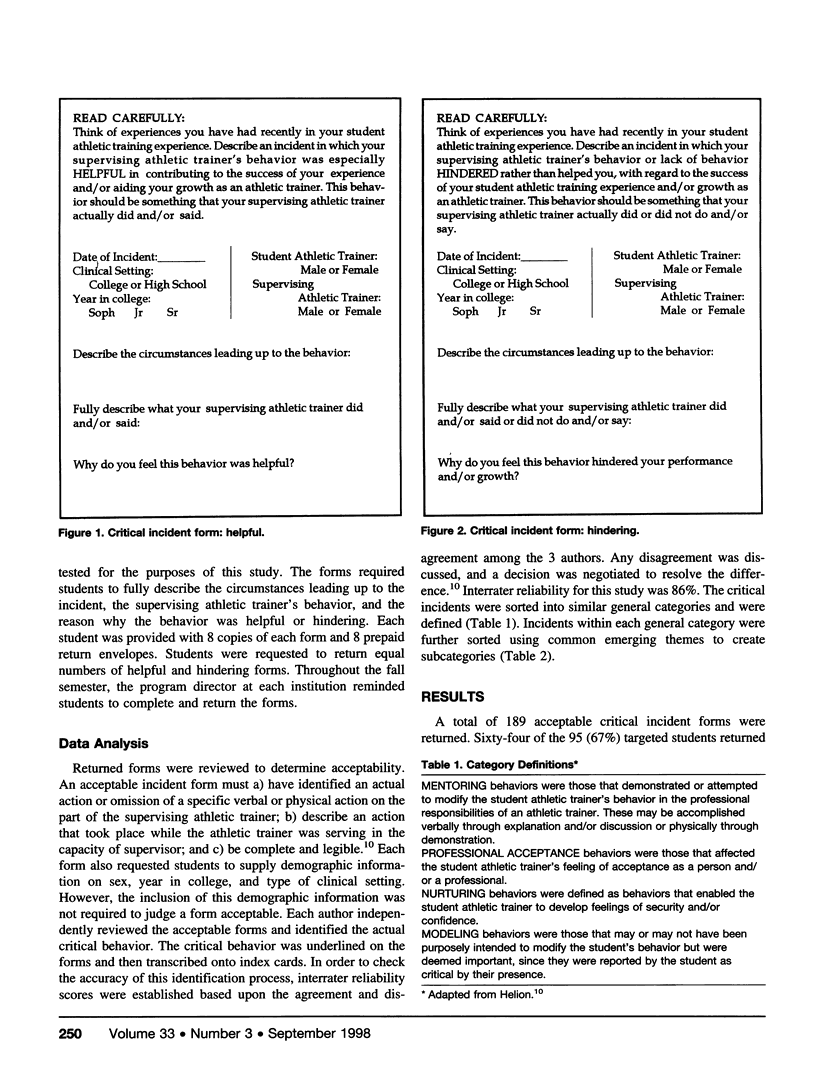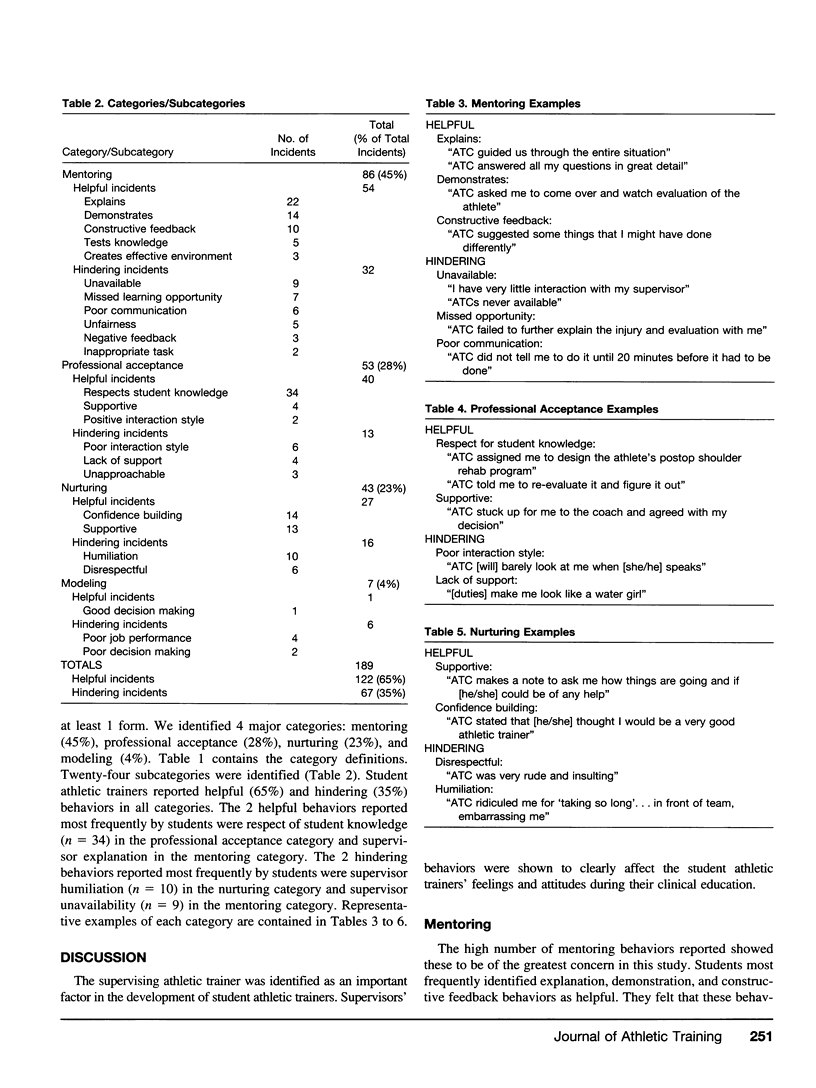Abstract
Objective:
To identify and describe critical helpful and hindering clinical teaching behaviors of supervising athletic trainers, as perceived by student athletic trainers, and to provide a better understanding of the student athletic training experience.
Design and Setting:
The critical incident technique was used to identify critical behaviors of supervising athletic trainers as perceived by student athletic trainers.
Subjects:
Sixty-four student athletic trainers from 4 undergraduate NATA-approved or CAAHEP-accredited programs volunteered to participate.
Measurements:
The data from the critical incident forms were reviewed for acceptability, inductively analyzed, and categorized. Results are reported in raw numbers and percentages. Examples are provided to illustrate each category.
Results:
Helpful and hindering supervisor behaviors were identified in 4 major categories and 24 subcategories. Students reported more helpful than hindering behaviors. Students reported mentoring behaviors most often, followed by accep- tance, nurturing, and modeling behaviors. Student athletic trainers wanted to be respected as professionals regarding ability and knowledge. They also desired mentoring through explanation, demonstration, and constructive feedback and nurturing through confidence building and other supportive supervisor behaviors. Students most often identified incidents of humiliating behaviors and lack of availability by the supervisors as hindering the clinical experience.
Conclusions:
Supervising athletic trainer behaviors had a profound effect on the professional development of student athletic trainers. Interaction between supervisors and students positively or negatively affected student athletic trainers' growth and development. Selection of supervising athletic trainers, matching of supervisors with students, and training for supervising athletic trainers are important issues that need further investigation. Student athletic trainers can provide insightful information that can be used to better understand and enhance the clinical experience.
Keywords: clinical education, clinical instruction, supervising athletic trainers
Full text
PDF




Selected References
These references are in PubMed. This may not be the complete list of references from this article.
- Andersen M. B., Larson G. A., Luebe J. J. Student and supervisor perceptions of the quality of supervision in athletic training education. J Athl Train. 1997 Oct;32(4):328–332. [PMC free article] [PubMed] [Google Scholar]
- Dunlevy C. L., Wolf K. N. Perceived differences in the importance and frequency of practice of clinical teaching behaviors. J Allied Health. 1992 Summer;21(3):175–183. [PubMed] [Google Scholar]
- Emery M. J. Effectiveness of the clinical instructor. Students' perspective. Phys Ther. 1984 Jul;64(7):1079–1083. doi: 10.1093/ptj/64.7.1079. [DOI] [PubMed] [Google Scholar]
- FLANAGAN J. C. The critical incident technique. Psychol Bull. 1954 Jul;51(4):327–358. doi: 10.1037/h0061470. [DOI] [PubMed] [Google Scholar]
- Jarski R. W., Kulig K., Olson R. E. Allied health perceptions of effective clinical instruction. J Allied Health. 1989 Fall;18(5):469–478. [PubMed] [Google Scholar]
- Jarski R. W., Kulig K., Olson R. E. Clinical teaching in physical therapy: student and teacher perceptions. Phys Ther. 1990 Mar;70(3):173–178. doi: 10.1093/ptj/70.3.173. [DOI] [PubMed] [Google Scholar]
- O'Shea H. S., Parsons M. K. Clinical instruction: effective/and ineffective teacher behaviors. Nurs Outlook. 1979 Jun;27(6):411–415. [PubMed] [Google Scholar]
- Starkey C. Reforming athletic training education. J Athl Train. 1997 Apr;32(2):113–114. [PMC free article] [PubMed] [Google Scholar]


